Exploring Different Styles of Yoga: Which One Suits You Best?
Yoga, a treasure trove of ancient wisdom, has been all the rage for quite some time now, and for good reason.
But with so many different styles of yoga, how do you pick the one that’s right for you? Let’s dive into the world of yoga and help you find your perfect match.
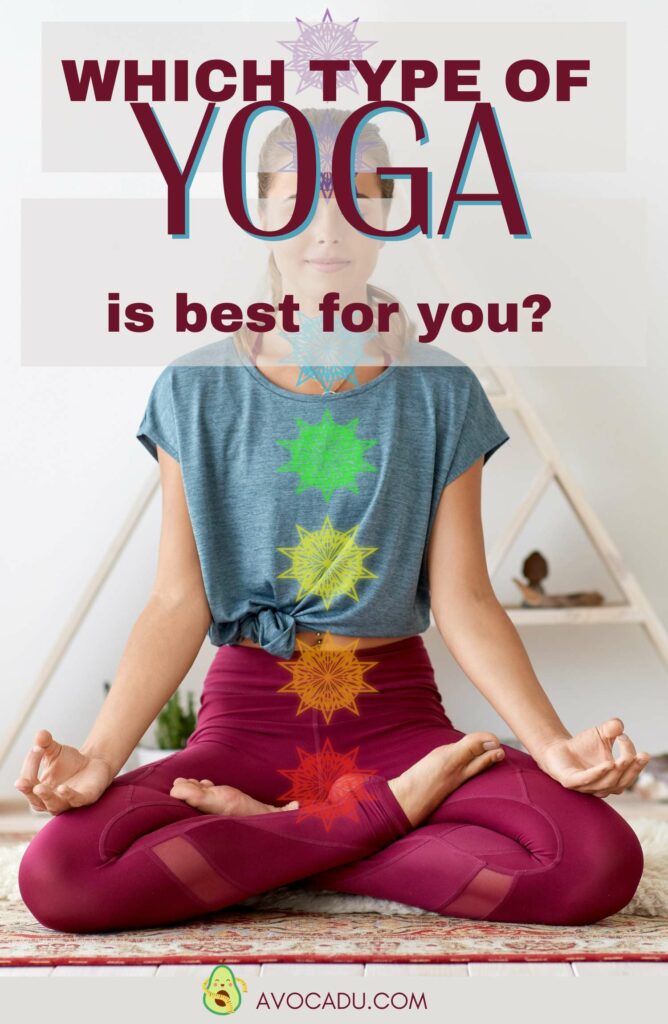
This post may contain affiliate links, which helps keep this content free. Please read our disclosure for more info.
A Brief History of Yoga
Before we start our yoga journey, let’s take a quick time-travel tour.
Yoga kicked off over 5,000 years ago in ancient India. Initially, it was all about spiritual connections and rituals.
Fast forward, and we’ve got Patanjali – the big name in classical yoga. He penned the Yoga Sutras and introduced the Eight Limbs of Yoga around 200 BCE. This was more structured and focused on self-development.
As time kept rolling, yoga added physical postures and practices to rejuvenate the body. It embraced elements of devotion, mysticism, and physical wellness.
In the late 19th and early 20th century, yoga packed its bags and went global. Thanks to travelers and scholars, it landed in the West.
Today, yoga is a global sensation with various styles like Vinyasa, Iyengar, and Bikram. From spirituality to fitness, it’s got something for everyone.
Understanding Your Yoga Goals
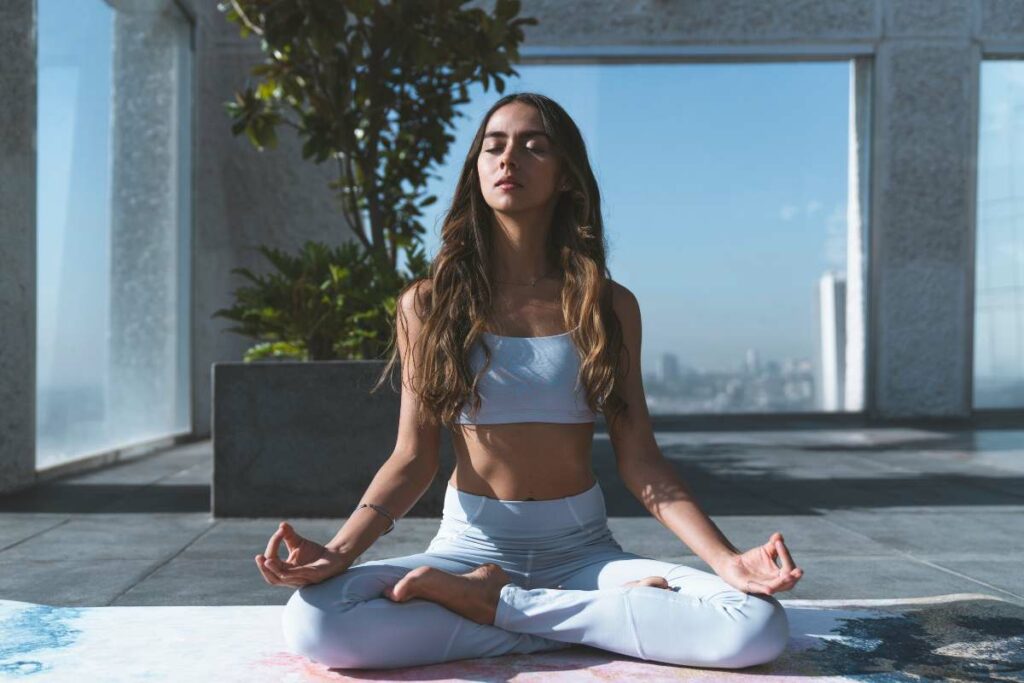
Before you jump on the mat, take a moment to reflect on what you’re seeking from yoga.
Knowing your goals will steer you towards the style that’s best for you. Let’s break down some common goals:
Stress Relief and Relaxation: If your life is a whirlwind of stress and you’re looking for an oasis of calm, yoga can be that refuge. Styles like Yin Yoga and Restorative Yoga are designed to calm the mind and relax the body.
Physical Fitness and Strength: Want to tone those muscles and build strength? Power Yoga, Ashtanga, and Vinyasa are more dynamic and can give you that workout vibe. They focus on building physical strength through a series of challenging postures.
Flexibility and Balance: If you’re as stiff as a board or find yourself tripping over your own feet, yoga can help. Hatha and Iyengar Yoga focus on alignment and holding poses, which can improve flexibility and balance over time.
Spiritual Growth and Mindfulness: If you’re on a quest for spiritual enlightenment or looking to cultivate mindfulness, Kundalini Yoga and traditional Hatha Yoga can be your guides. They often involve meditation, mantra chanting, and deep self-reflection.
Healing and Recovery: Recovering from an injury or dealing with chronic pain? Certain yoga styles like Iyengar and Restorative Yoga use props to support the body and facilitate healing.
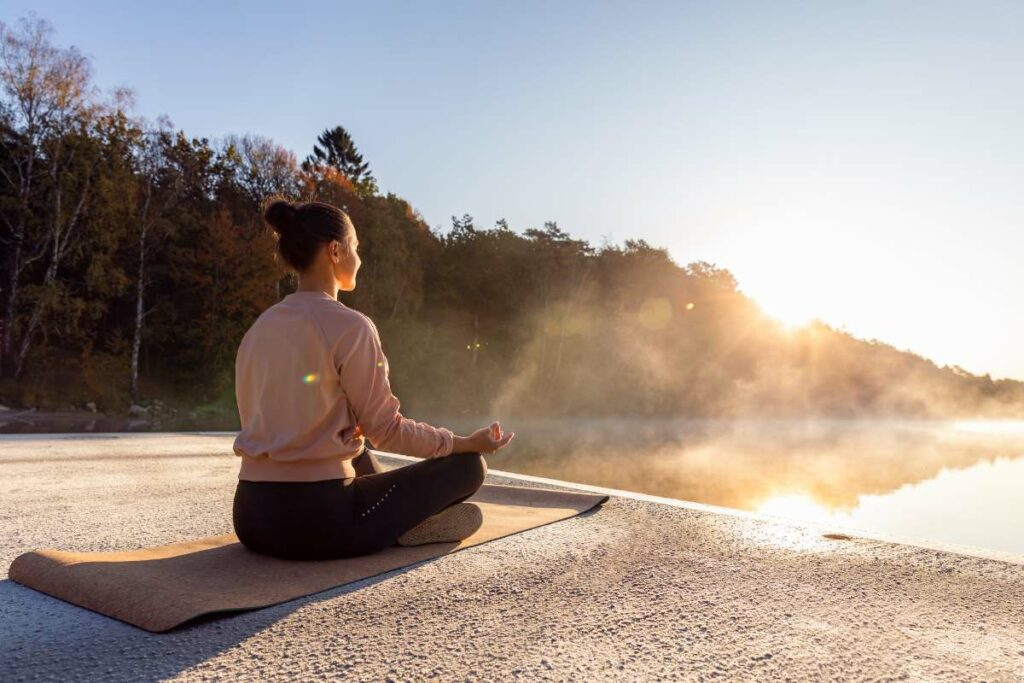
Community and Social Connection: Looking to be part of a like-minded community? Joining a local yoga class or studio can offer social connections with fellow yogis who share your interests.
Discipline and Focus: If your mind tends to wander, the structured practice of Ashtanga or the concentration required in Vinyasa can help in developing discipline and focus.
Adventure and Experimentation: Just looking to try something new and exciting? The world of yoga is vast and varied. Don’t be afraid to dip your toes into different styles until you find the one that clicks.
The beauty of yoga is that it’s not an all-or-nothing deal. Many of these goals overlap, and you may find that your yoga practice brings you unexpected benefits.
Core Principles of Yoga
Yoga is a treasure chest of principles that go beyond the physical postures you might see on Instagram. It’s like an iceberg – what you see is just the tip! Let’s dive into some core principles:
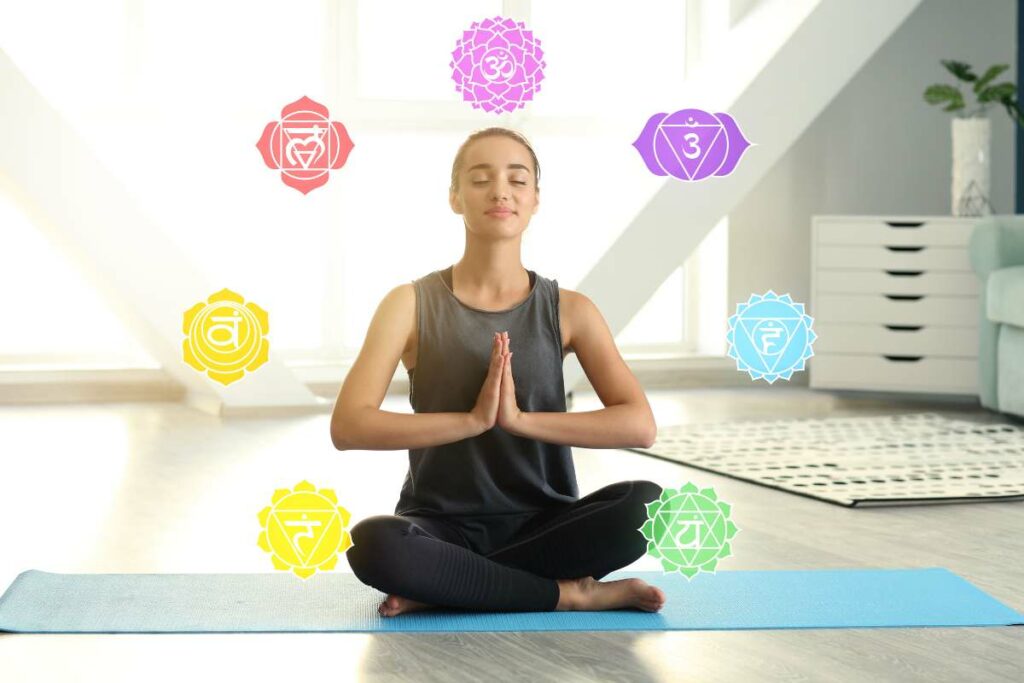
The Eight Limbs of Yoga (Ashtanga)
Patanjali’s Eight Limbs of Yoga is essentially a guide for a meaningful and purposeful life. They act as moral, ethical, and personal disciplines:
- Yamas: These are ethical standards in how you deal with the world around you, including non-violence, truthfulness, non-stealing, continence, and non-possessiveness.
- Niyamas: Personal practices that relate to your inner world. They include cleanliness, contentment, spiritual austerity, study of sacred texts, and living with an awareness of the divine.
- Asanas: The physical postures that most people associate with yoga. They help to detoxify the body and develop strength and flexibility.
- Pranayama: Breath control. This limb is about mastering and controlling your breath, which can help in focusing, energizing, and balancing the mind.
- Pratyahara: Withdrawal of the senses. This is about detaching from external stimuli and focusing inward, essential for meditation.
- Dharana: Concentration. This involves focusing the mind on a single point, object, or thought.
- Dhyana: Meditation or contemplation. It’s the uninterrupted flow of concentration, where the object of focus engulfs the mind entirely.
- Samadhi: A state of ecstasy. Here, the meditator merges with their point of focus and transcends the Self altogether.
Pranayama (Breath Control)
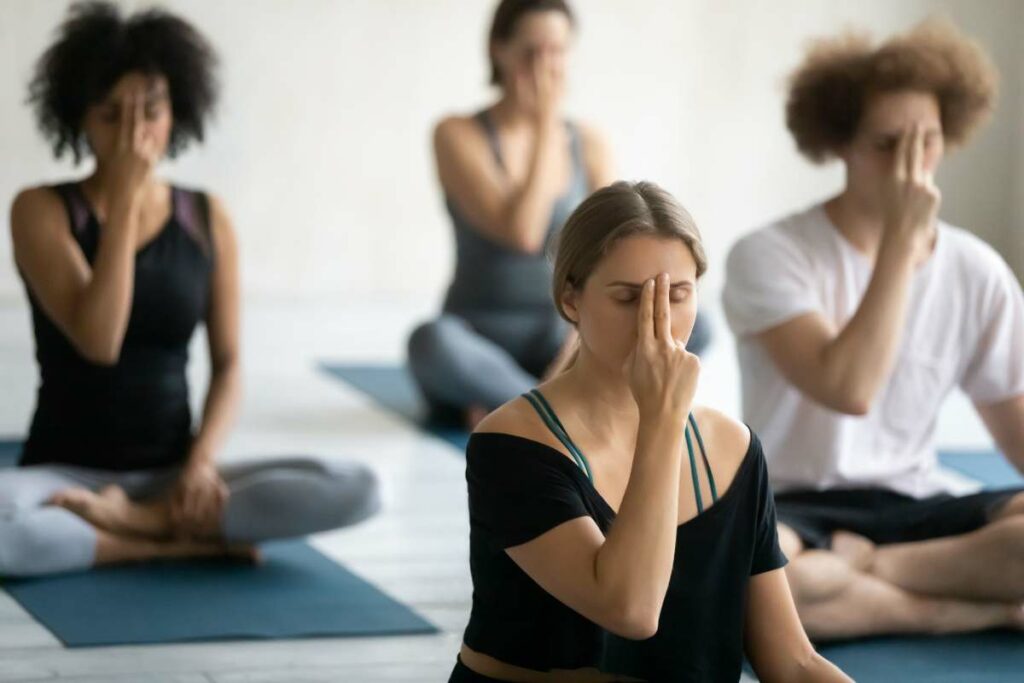
Apart from being one of the Eight Limbs, Pranayama deserves a special mention. By controlling the breath, we can manage our energies, emotions, and thoughts. Techniques like Ujjayi Breath, Alternate Nostril Breathing, and Kapalabhati can be real game-changers.
Asanas (Physical Postures)
Asanas, another essential element, are the physical postures practiced in yoga. Through asanas, one can work on strength, flexibility, balance, and concentration. They also help to cleanse and purify the body.
Dhyana (Meditation)
Meditation in yoga is about mindfulness and being present. It helps in finding inner peace, clarity, and focus. Through regular practice, it can bring profound mental and spiritual benefits.
Mantras and Chanting
In many yoga practices, mantras and chanting are used to focus the mind and connect with a higher consciousness. These sounds and vibrations can have a powerful effect on the mind and body.
Diet and Lifestyle
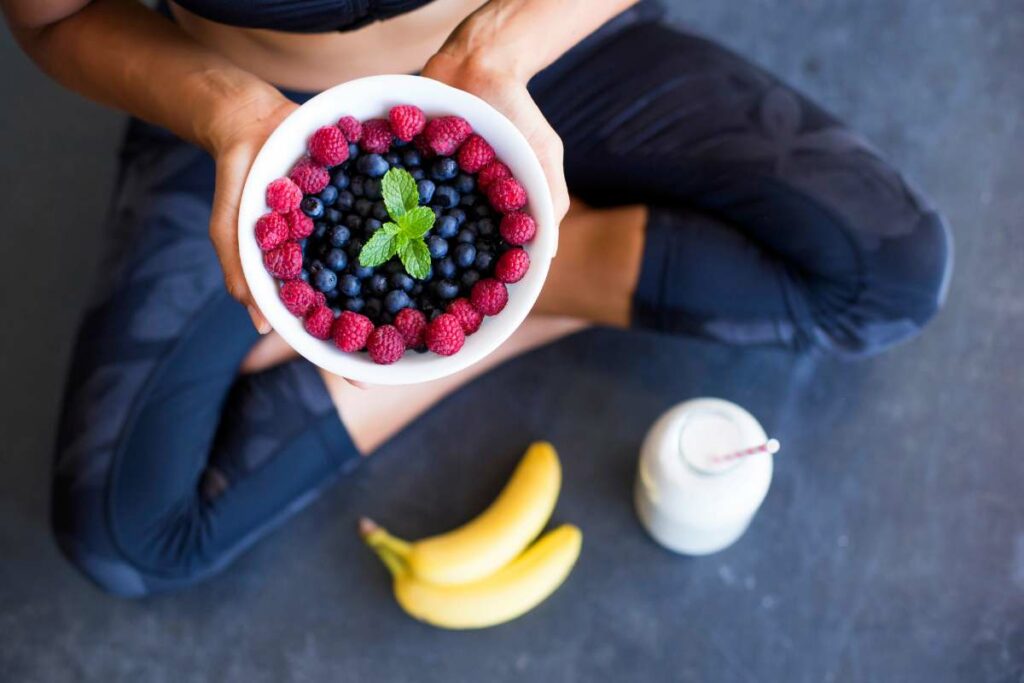
Yoga also encompasses how you nourish your body and mind through diet and lifestyle. Here at Avocadu, we promote a healthy, whole food diet!
Yoga is a deeply layered practice that nurtures the body, mind, and spirit. Understanding these core principles can enrich your practice and help you find greater balance and fulfillment in life.
Introduction to Different Styles of Yoga
Now, let’s meet the yoga family:
Hatha Yoga
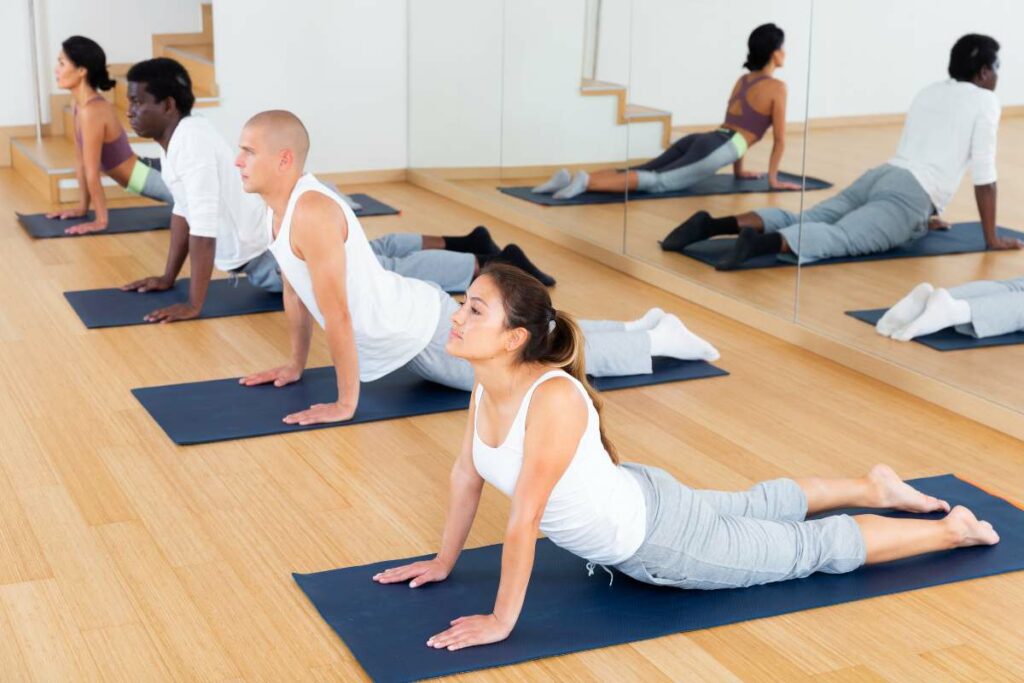
Hatha Yoga is often considered the root from which various yoga styles have branched out. It’s like the OG yoga that brings it back to the basics.
Hatha Yoga is the gentle giant of yoga, focusing on the foundational aspects. The term ‘Hatha’ is derived from Sanskrit where ‘Ha’ means sun and ‘Tha’ means moon, representing the balance between opposing forces.
It typically combines asanas (postures), pranayama (breath control), and meditation in a relatively gentle way. It’s not as fast-paced as, say, Vinyasa, but not as passive as Restorative Yoga.
Benefits:
- Building a Solid Foundation: Hatha is great for understanding the basics. It gives you a strong foundation, which is essential if you want to explore other styles later.
- Enhancing Flexibility and Strength: The poses in Hatha Yoga are designed to align your skin, muscles, and bones. This can lead to improved flexibility and strength.
- Stress Reduction: With its gentle approach, Hatha Yoga can be incredibly relaxing and can help in reducing stress and anxiety.
- Improved Balance: By holding poses for longer periods, Hatha helps in developing a better sense of balance.
- Mind-Body Connection: The combination of physical postures, breath control, and meditation helps in fostering a deeper connection between the mind and body.
Who it’s best for:
- Beginners: If you’re new to yoga and looking for a style that won’t throw you into the deep end, Hatha Yoga is perfect.
- Those Seeking Balance: If your life feels like a seesaw and you’re looking for some balance, the symbolic and literal balance-focused nature of Hatha Yoga can be beneficial.
- People Looking for Stress Relief: For those who lead hectic lives and seek a sanctuary for relaxation and stress relief.
- Mindfulness Seekers: If you’re looking to cultivate mindfulness and a deeper mind-body connection.
What to Expect in a Class:
Hatha Yoga classes generally start with a short meditation or breathing exercise to center the mind. This is followed by a series of poses that are held for multiple breaths.
These poses can range from standing and balancing postures to seated and twisting ones. The class usually winds down with a period of relaxation or meditation.
Tips for Practicing Hatha Yoga:
- Take it Slow: Don’t rush through the poses. Take your time to get into and maintain each pose.
- Focus on Your Breath: Pay attention to your breathing. It should be calm and controlled.
- Listen to Your Body: Don’t push yourself into poses that feel uncomfortable. It’s okay to make modifications.
Vinyasa Yoga
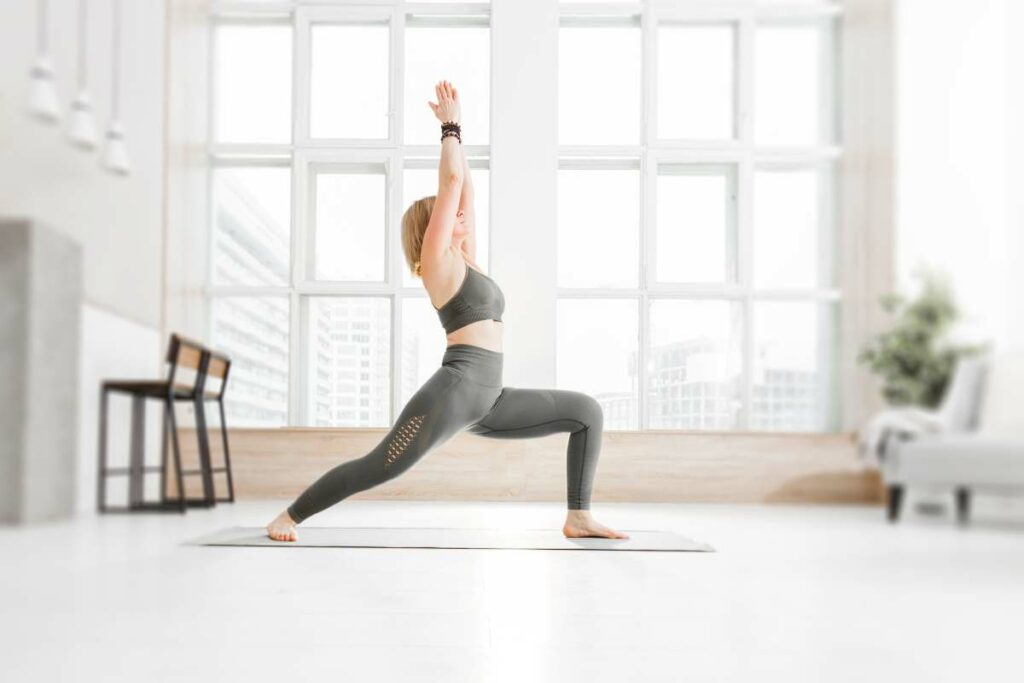
Imagine synchronizing your breath with a series of gracefully flowing movements; that’s Vinyasa Yoga for you. It’s like creating a moving tapestry with your body.
Vinyasa Yoga, also known as “Flow Yoga,” is like the rhythm of the waves in the ocean – continuous and dynamic.
The term ‘Vinyasa’ in Sanskrit means ‘connection’. In this context, it refers to the connection between movement and breath.
This yoga style is characterized by stringing together a sequence of postures so that you move fluidly from one to the next, guided by your inhalations and exhalations. The room might be heated for added intensity and to help with flexibility.
Benefits:
- Cardiovascular Workout: With its fast-paced sequences, Vinyasa is great for getting your heart rate up and can even be a form of cardiovascular exercise.
- Increased Strength and Stamina: The continual movement and challenging poses can help build physical strength and endurance.
- Enhanced Flexibility: The sequences in Vinyasa often include stretches and poses that promote flexibility.
- Mindfulness and Focus: The synchronicity of breath and movement requires concentration and helps cultivate an awareness of the present moment.
- Stress Reduction: Despite being physically demanding, Vinyasa can be mentally soothing as you focus on movement and breath, shedding away the stress.
Who it’s best for:
- Fitness Enthusiasts: If you’re into physical fitness and looking for a more athletic form of yoga, Vinyasa is your match.
- Seasoned Yogis: If you have some experience in yoga and want to take it up a notch, this style will keep you on your toes.
- Those Who Dislike Routine: Vinyasa classes are often different each time, ideal if you like variety and spontaneity.
What to Expect in a Class:
Vinyasa classes typically begin with a gentle warm-up, which then builds into a sequence of asanas that can vary greatly from class to class.
Be prepared for a physically demanding session, where you flow from one pose to the next. The classes often end with a calming cooldown period and a moment of relaxation.
Tips for Practicing Vinyasa Yoga:
- Stay Hydrated: Because of the physicality and potential heat, make sure to drink water before and after class.
- Don’t Forget to Breathe: Your breath guides the movements. Focus on synchronizing your breathing with each transition.
- Go at Your Own Pace: While the class might move quickly, it’s important not to rush and to listen to your own body.
Ashtanga Yoga
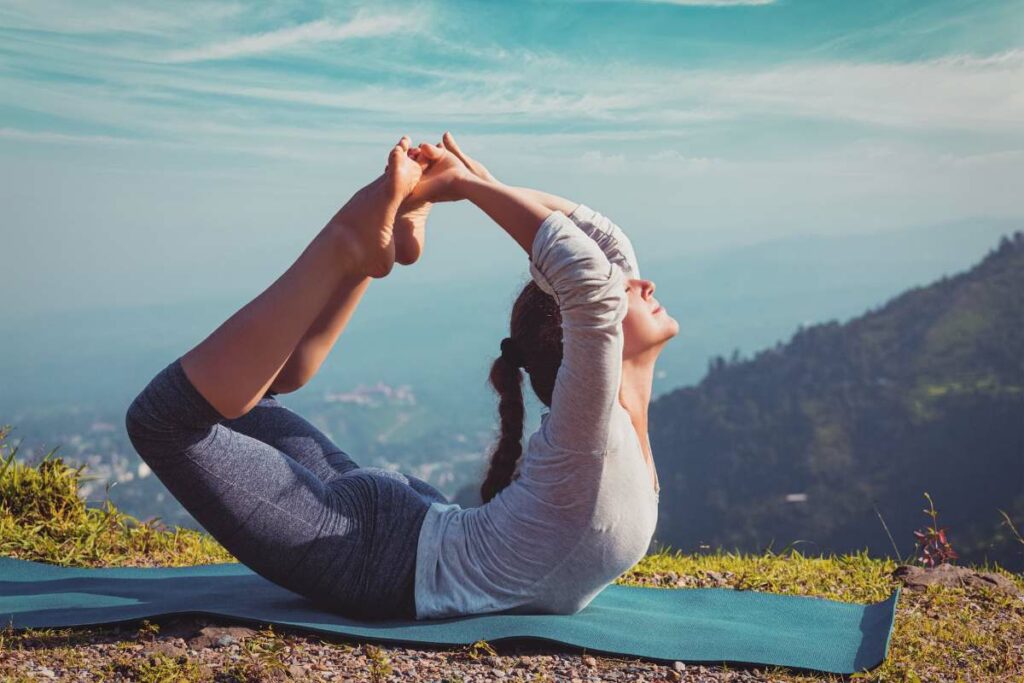
Ashtanga Yoga is like the well-orchestrated symphony of the yoga world – disciplined, structured, and powerful. It’s a journey that challenges both your body and mind.
Ashtanga Yoga is rooted in ancient yoga traditions and consists of six series of specifically sequenced yoga poses. The practice combines synchronized breathing with a progressive series of postures to produce intense internal heat and a purifying sweat that detoxifies muscles and organs.
The system is based on ‘eight limbs’ which include moral and ethical considerations, postures, breath, sense withdrawal, concentration, meditation, and pure contemplation.
The movements are closely linked to the breath, making it a physically demanding practice.
Benefits:
- Builds Strength and Endurance: Ashtanga’s physically challenging postures can greatly increase muscle strength and endurance.
- Enhances Flexibility: Regular practice can result in increased flexibility as the postures work on different muscles and joints.
- Mental Focus and Clarity: The required focus on breath and the concentration needed to move between poses can sharpen mental focus and bring clarity.
- Discipline and Commitment: Following the structured sequence inculcates a sense of discipline and commitment both on and off the mat.
- Detoxifies the Body: The intense internal heat produced can help in detoxifying the body, cleansing it from within.
Who it’s best for:
- Discipline Seekers: For those who are looking to cultivate discipline in their practice and perhaps in life as well.
- Physical Fitness Lovers: If you enjoy a challenge and wish to work on your physical fitness, Ashtanga is the go-to.
- Experienced Yogis: Those with a good understanding of basic postures who want to deepen their practice.
What to Expect in a Class
An Ashtanga class usually follows a set sequence of postures (either the primary series or one of the more advanced series). You start with Sun Salutations, then move into standing poses, seated poses, inversions, and backbends before relaxation.
The teacher may guide you through the sequence, or in a Mysore style class, you practice the sequence at your own pace while the teacher provides adjustments and guidance as needed.
Tips for Practicing Ashtanga Yoga:
- Be Patient: The sequences are challenging, don’t be discouraged if you don’t get them right away.
- Consistent Practice is Key: The benefits of Ashtanga develop over time with regular practice.
- Use Breath as Your Guide: Keep your breath controlled and even, letting it guide your movements.
Ashtanga Yoga is for those who seek a physically challenging, highly structured, and disciplined practice that not only strengthens the body but also builds mental fortitude. It’s not for the faint-hearted, but the rewards can be deeply transformative. 🌟
Kundalini Yoga
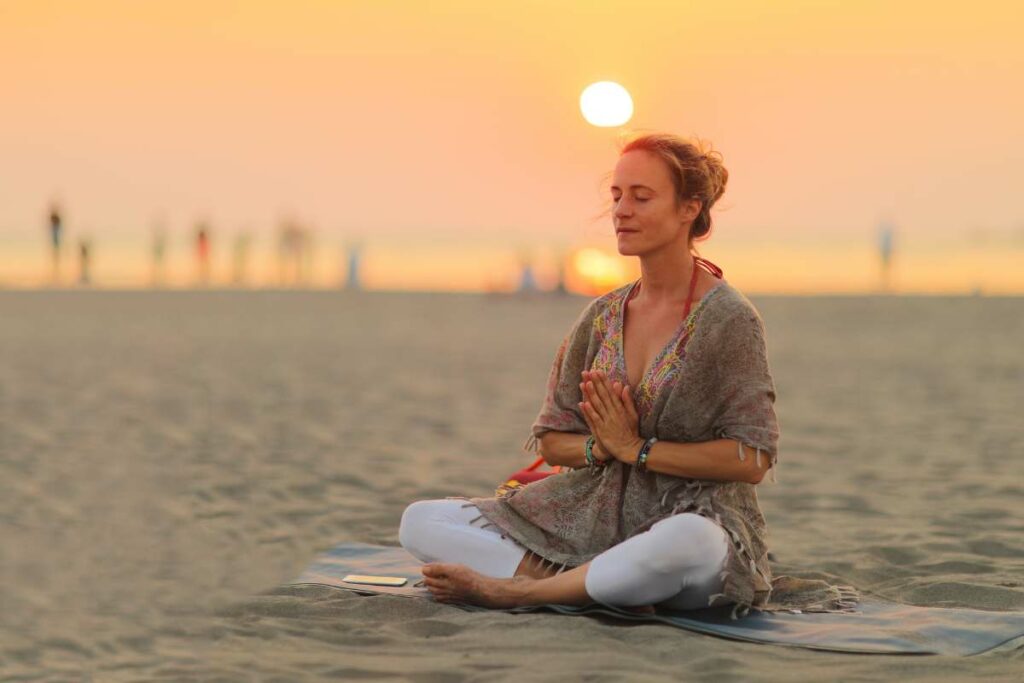
Kundalini Yoga is like a mystical adventure – think of it as embarking on an inner journey where postures, chanting, and meditation unite.
This practice is often considered more spiritual and focuses on the awakening of the Kundalini energy believed to reside at the base of the spine. Let’s delve into it:
Kundalini Yoga is often referred to as the “Yoga of Awareness”. It aims to awaken the energy at the base of the spine (referred to as Kundalini) and to draw it upward through the seven chakras (energy centers).
A typical Kundalini class incorporates dynamic breathing techniques, postures, mantras, chanting, and meditation.
The practice is designed to strengthen the nervous system, balance the glandular system, and harness the energy of the mind and emotions, leading to greater self-awareness and consciousness.
Benefits:
- Emotional Balance: The combination of breath, movement, and sound works profoundly on the psyche, helping to bring emotional balance.
- Increased Energy: The awakening of the Kundalini energy can result in a notable increase in vitality and aliveness.
- Stress Relief and Relaxation: The meditative aspects of Kundalini Yoga can be profoundly relaxing and can help alleviate stress.
- Enhanced Intuition and Self-awareness: As the energy ascends through the chakras, practitioners often experience heightened intuition and a deeper understanding of the self.
- Strengthening the Nervous System: The practice is known for its ability to strengthen and stabilize the nervous system.
Who it’s best for:
- Spiritual Seekers: If your primary motivation for practicing yoga is spiritual growth and heightened awareness, Kundalini may be the perfect fit.
- Those Seeking Emotional Healing: If you are working through emotional issues or seeking emotional balance.
- Adventure Lovers: For those who are open to trying something different in their yoga practice.
What to Expect in a Class
In a Kundalini class, expect a combination of dynamic movements (kriyas) with powerful breathing techniques. Chanting and mantras are a significant part of the practice, and the teacher will likely lead the class in chanting in Sanskrit.
The class will often include meditation, sometimes using a mantra or focusing on the breath. The goal is to awaken the Kundalini energy and to bring it from the base of the spine to the crown chakra at the top of the head.
Tips for Practicing Kundalini Yoga:
- Have an Open Mind: This practice is different from many other forms of yoga. Keep an open mind and heart.
- Don’t Force It: Allow the Kundalini energy to move naturally. Don’t force or push.
- Engage in the Chanting: Even if it feels strange, take part in the chanting and experience the vibrations it creates in your body.
Kundalini Yoga is a deeply spiritual practice that can help you connect with your inner self and the energies within your body.
Iyengar Yoga
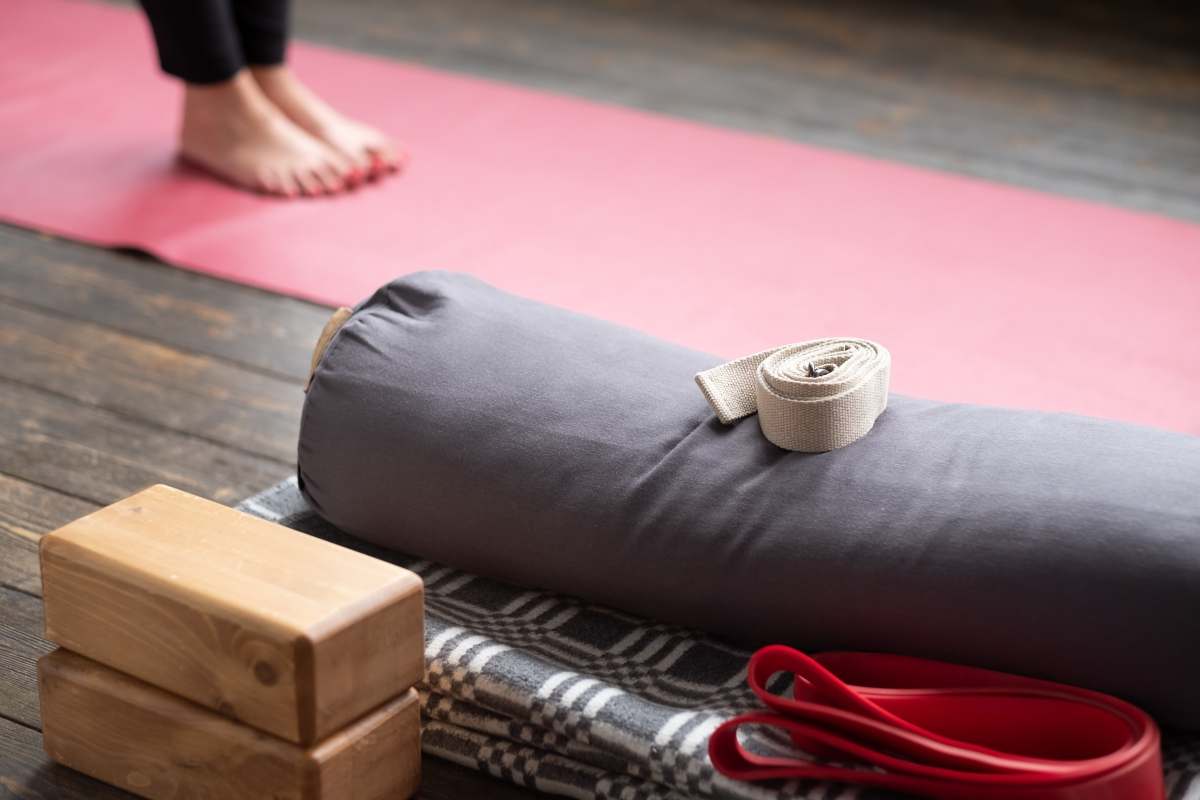
Iyengar Yoga is named after its founder, B.K.S. Iyengar, and focuses on precision and alignment in the execution of postures (asanas). It’s renowned for the use of props such as blocks, belts, bolsters, and chairs to help practitioners achieve the perfect pose.
The aim is to develop strength, mobility, and stability through the practice of a wide range of postures, with an emphasis on mindfulness and breath control.
Benefits:
- Improved Alignment and Posture: The attention to detail helps in improving alignment which can lead to better posture and fewer aches and pains.
- Increased Strength and Flexibility: Holding poses for an extended period builds strength, while the use of props helps to achieve a greater range of motion.
- Therapeutic Benefits: The precision of Iyengar makes it particularly beneficial for recovering from injuries or managing chronic conditions.
- Deepened Self-awareness: The focus on alignment and detail can lead to a greater understanding of one’s body and self.
- Stress Relief and Calmness: The mindful nature of the practice can be calming and is known to relieve stress.
Who it’s best for:
- Detail-oriented Individuals: If you have an eye for detail and love the idea of perfecting something, this is your style.
- Injury Sufferers or those with Physical Limitations: The use of props makes this practice accessible to those with injuries or physical limitations.
- Beginners looking for a Solid Foundation: The focus on alignment provides an excellent foundation for new practitioners.
What to Expect in a Class
An Iyengar class will usually be very methodical and structured. Expect detailed instructions from the teacher on how to perform each posture, often with demonstrations.
There will be an emphasis on holding poses for longer periods to perfect alignment, and props will be used to facilitate this. The class may not flow as dynamically as in other forms of yoga, but the intensity comes from the focus on precision and alignment.
Tips for Practicing Iyengar Yoga:
- Be Patient: This style is about precision and perfection, which takes time. Don’t be in a hurry.
- Use the Props: Don’t shy away from using blocks, straps, or any other props. They are there to help you achieve better alignment.
- Ask for Guidance: If you’re unsure about a pose or alignment, ask the instructor for help.
Iyengar Yoga is for those who want to delve deeply into the intricacies of each posture, perfecting and refining their practice. Whether you’re healing from an injury, looking to improve your posture, or have an affinity for detail, Iyengar offers a fulfilling and enriching practice.
Bikram/Hot Yoga
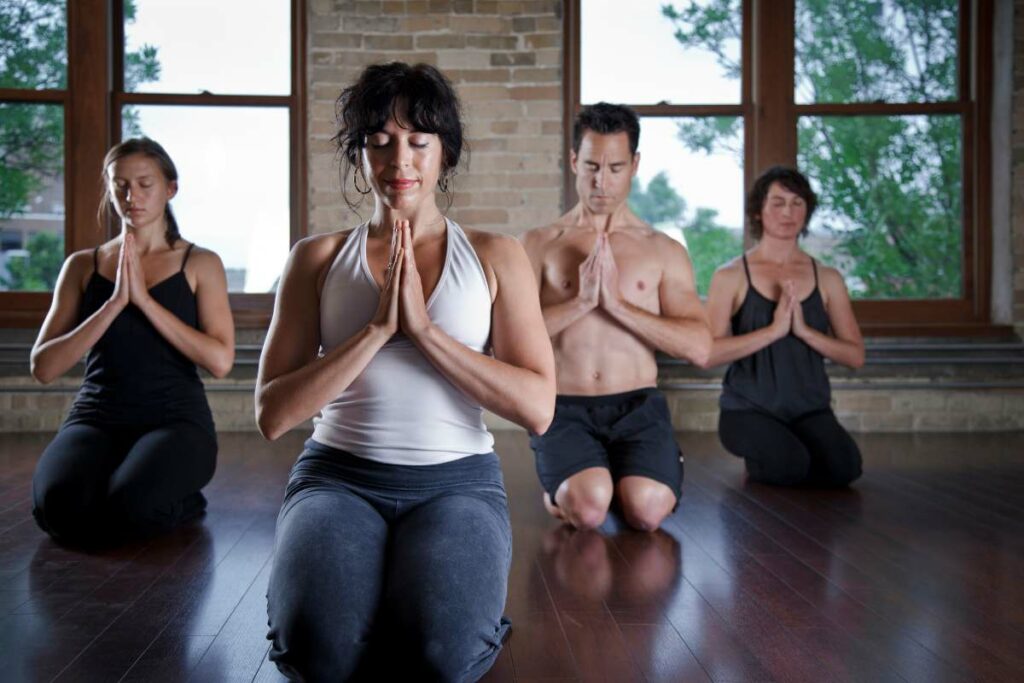
Bikram Yoga was created by Bikram Choudhury and consists of a specific series of 26 postures and two breathing exercises performed in a room heated to approximately 105°F (40°C) with a humidity of 40%.
Hot Yoga, on the other hand, is a bit more flexible in terms of the sequence of postures but is still practiced in a heated room. The heat is believed to help in detoxifying the body and loosening the muscles, which can enhance flexibility.
Benefits:
- Detoxification: Sweating it out in a heated room helps in flushing toxins out of the body.
- Increased Flexibility: The warm muscles are more pliable, which can lead to improved flexibility.
- Endurance and Mental Focus: The challenging environment can help in building mental and physical endurance.
- Calorie Burn: The intensity of the heat can lead to a higher calorie burn compared to a non-heated environment.
- Joint Health: The heat can help in lubricating joints, which is beneficial for joint health.
Who it’s best for:
- Sweat Lovers: If the idea of sweating and feeling like you’ve had a workout appeals to you, this is right up your alley.
- Seekers of Physical Challenge: If you like to push your limits and enjoy intense physical activity.
- Individuals Looking to Increase Flexibility: The heat helps in stretching those muscles further.
What to Expect in a Class
Upon entering the room, you’ll be hit by a wave of heat and humidity. Classes usually last for 90 minutes. In a Bikram class, you’ll go through the 26 postures twice. In a Hot Yoga class, the sequence might vary.
Expect to sweat a lot. It’s important to stay hydrated, so make sure you have a bottle of water with you.
Tips for Practicing Bikram/Hot Yoga:
- Hydrate: Drink plenty of water before, during, and after class.
- Wear Appropriate Clothing: Lightweight, breathable, and moisture-wicking clothes are best.
- Bring a Towel: A towel is essential for wiping sweat and preventing slips on your mat.
- Listen to Your Body: The heat can be intense. If you need to take a break or step out of the room, do it.
- Ease Into It: If you’re new to Bikram or Hot Yoga, take it easy in the beginning. Your body will need time to adjust to the heat.
Bikram/Hot Yoga is like stepping into a sauna and performing a series of challenging postures. It’s intense but can be incredibly rewarding for those who love the sensation of sweating and the feeling of accomplishment that comes with it.
Yin Yoga
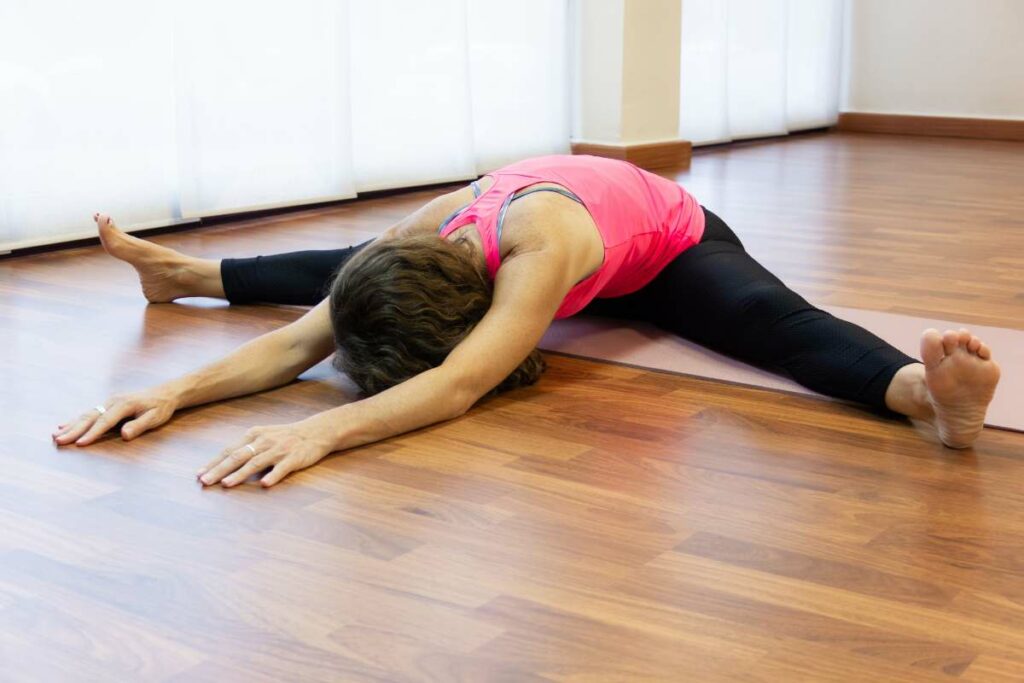
Yin Yoga is a slow-paced style of yoga where postures are held for longer periods – typically from 45 seconds to five minutes or even longer.
The practice targets the deeper connective tissues – the ligaments, joints, bones, and the deep fascia networks of the body, rather than just the muscles.
It’s also highly meditative, encouraging practitioners to turn inward and tune into both their body and mind.
Benefits:
- Deep Stretching: Holding poses for longer periods allows for a deeper stretch which can be incredibly satisfying and beneficial for flexibility.
- Increased Flexibility and Joint Mobility: The focus on stretching connective tissue can help in increasing flexibility and range of motion in the joints.
- Mental Clarity and Calmness: The meditative nature of Yin Yoga can lead to greater mental clarity and a calmer mind.
- Stress and Anxiety Reduction: The slow pace and focus on breath can have a soothing effect on the nervous system, reducing stress and anxiety.
- Mindfulness and Meditation: Practicing Yin can be a form of meditation as you become more aware of your body and breath.
Who it’s best for:
- Anyone Looking to Stretch: If your body is craving some deep stretching, Yin is the ticket.
- Stress-Relief Seekers: If you’re looking to calm your mind and relieve stress.
- Meditators and Mindfulness Practitioners: Yin is a form of meditative yoga that can complement a meditation practice.
- Athletes and Those with an Active Lifestyle: Yin can balance a more active lifestyle or exercise regimen.
What to Expect in a Class
Yin classes usually involve a series of long-held, passive floor poses. Don’t expect to break a sweat, but be prepared to feel an intense stretch.
The room may be a bit cooler than in other yoga classes, as the focus isn’t on warming the muscles.
The instructor might encourage you to focus on your breath or offer meditative prompts. Silence and stillness are often emphasized.
Tips for Practicing Yin Yoga:
- Be Patient: Holding poses for a long time can be challenging in a different way. Breathe into the stretches and try to stay relaxed.
- Don’t Push Too Hard: Yin poses should be a “good” kind of intense, not painful. Back off if you’re straining too much.
- Use Props: Blocks, bolsters, and blankets can be used to support your body in the poses.
- Stay Warm: Bring a sweater or blanket, as the body can cool down in the long holds.
- Keep an Open Mind: The meditative aspects might be new for some. Approach them with curiosity.
Yin Yoga is like a gentle, deep tissue massage for your connective tissues. It’s not about the burn, but about calming the mind while deeply opening the body.
For those looking to complement an active lifestyle or just sink into relaxation, Yin Yoga can be a deeply satisfying and transformative practice.
Restorative Yoga
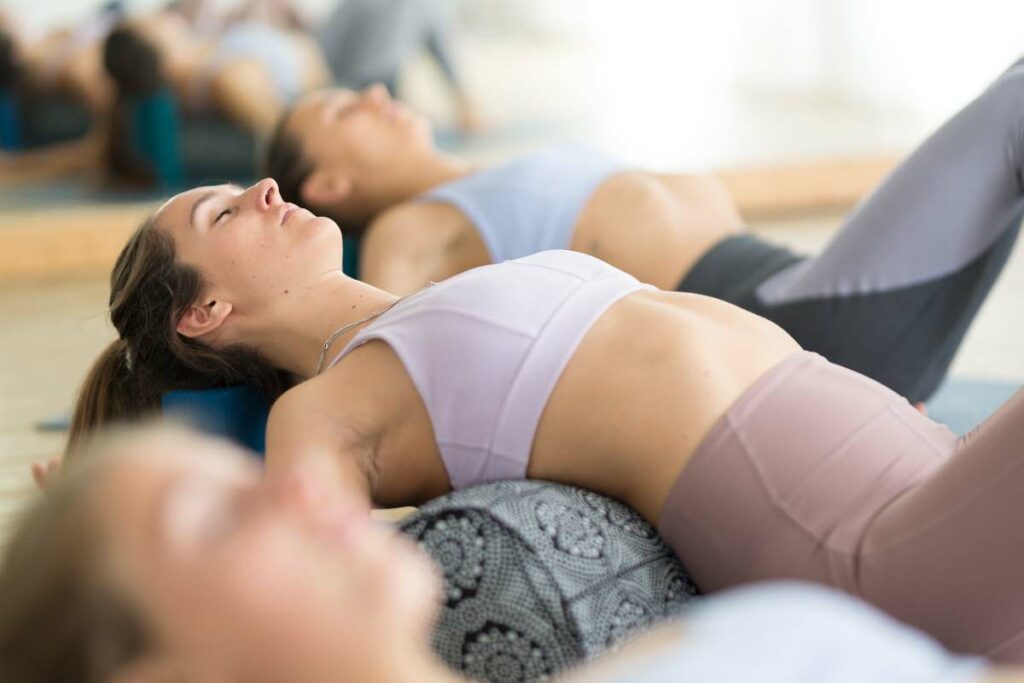
Restorative Yoga is a gentle and therapeutic style of yoga that uses props like bolsters, blankets, and blocks to fully support the body in poses.
The goal is to hold the poses for an extended period (often 5-20 minutes) allowing the body to release tension passively. There is minimal effort involved, and the focus is on calming the mind and restoring the body.
Benefits:
- Stress Relief: The calming environment and gentle poses help to activate the parasympathetic nervous system, reducing stress levels.
- Deep Relaxation: The use of props makes it easier to relax into the poses, promoting deep relaxation.
- Enhances Flexibility: As the body relaxes into the poses, there is a gentle stretching that can improve flexibility over time.
- Healing and Recovery: It’s beneficial for people recovering from injuries or illness, as it encourages healing without straining the body.
- Mindfulness and Presence: The slow nature of Restorative Yoga can facilitate a meditative state and cultivate mindfulness.
Who it’s best for:
- Those Needing Stress-Relief: If you’re feeling frazzled and need to wind down.
- Individuals in Recovery: Whether recovering from illness, injury, or an intense workout, Restorative Yoga can aid in the healing process.
- People Seeking Mental Calmness: If you’re looking to cultivate mental clarity and peace.
- Anyone and Everyone: Honestly, who couldn’t benefit from some relaxation?
What to Expect in a Class
Upon entering a Restorative Yoga class, you’ll likely see a plethora of props like bolsters, blankets, and blocks. The room is often dimly lit, sometimes with soft music playing.
The instructor will guide you into a handful of poses that will be held for several minutes each. During this time, your body is fully supported by props, and you’re encouraged to relax deeply.
Tips for Practicing Restorative Yoga:
- Come with an Open Mind: If you’re used to more active styles of yoga, Restorative might feel like a change of pace. Embrace it.
- Use Props: Don’t be shy about using props. They are there to support you.
- Dress Comfortably and Warmly: Wear comfy clothes, and maybe bring a sweater or socks as your body might cool down during the practice.
- Focus on Your Breath: Use your breath as a tool to deepen your relaxation.
- Allow Yourself to Let Go: This is a time for release and relaxation. Give yourself permission to fully let go.
Restorative Yoga is like a spa for your soul. It’s about letting go, unwinding, and allowing yourself to be nurtured. In a world that is often go-go-go, this practice is an oasis of calm.
How to Get Started
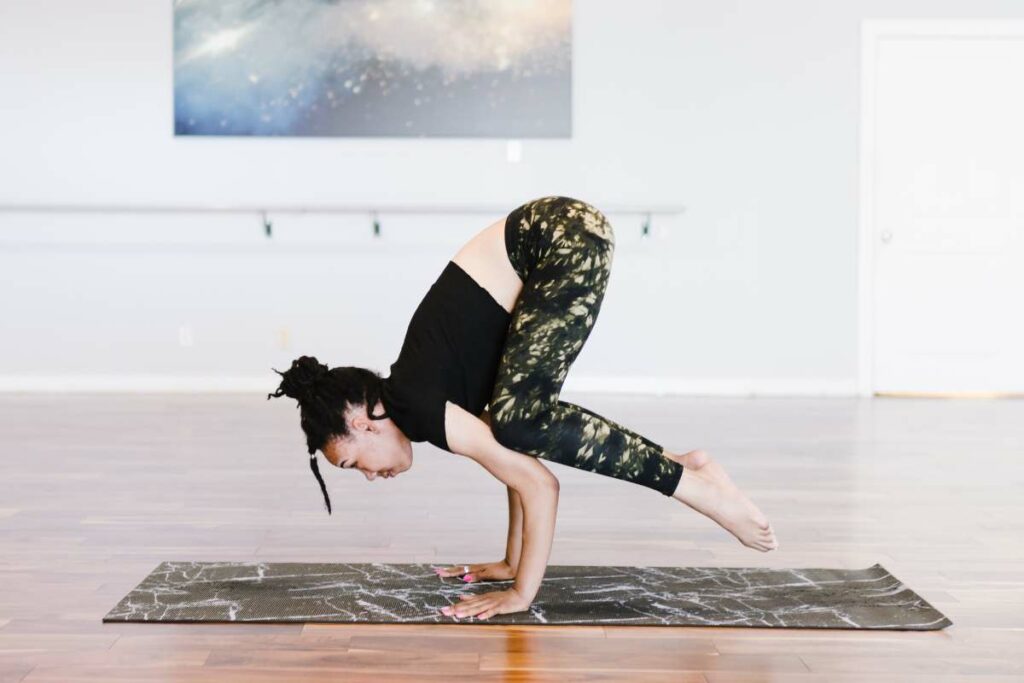
You’re probably feeling inspired to jump on the yoga train. So, how do you actually get started?
From finding the right class to buying your first yoga mat, here’s your guide to starting your yoga journey.
Selecting the Right Class and Teacher:
- Research Studios: Look for studios in your area and check out their class schedules. Many studios offer a variety of yoga styles, so you might be able to try a few different ones.
- Ask for Recommendations: Friends or family members who practice yoga can often provide recommendations.
- Teacher’s Experience: Look for a teacher who is experienced and certified. Read reviews or ask around.
- Trial Classes: Many studios offer trial classes or introductory packages. Take advantage of these to see if the studio and teacher are a good fit for you.
Essential Gear for Beginners:
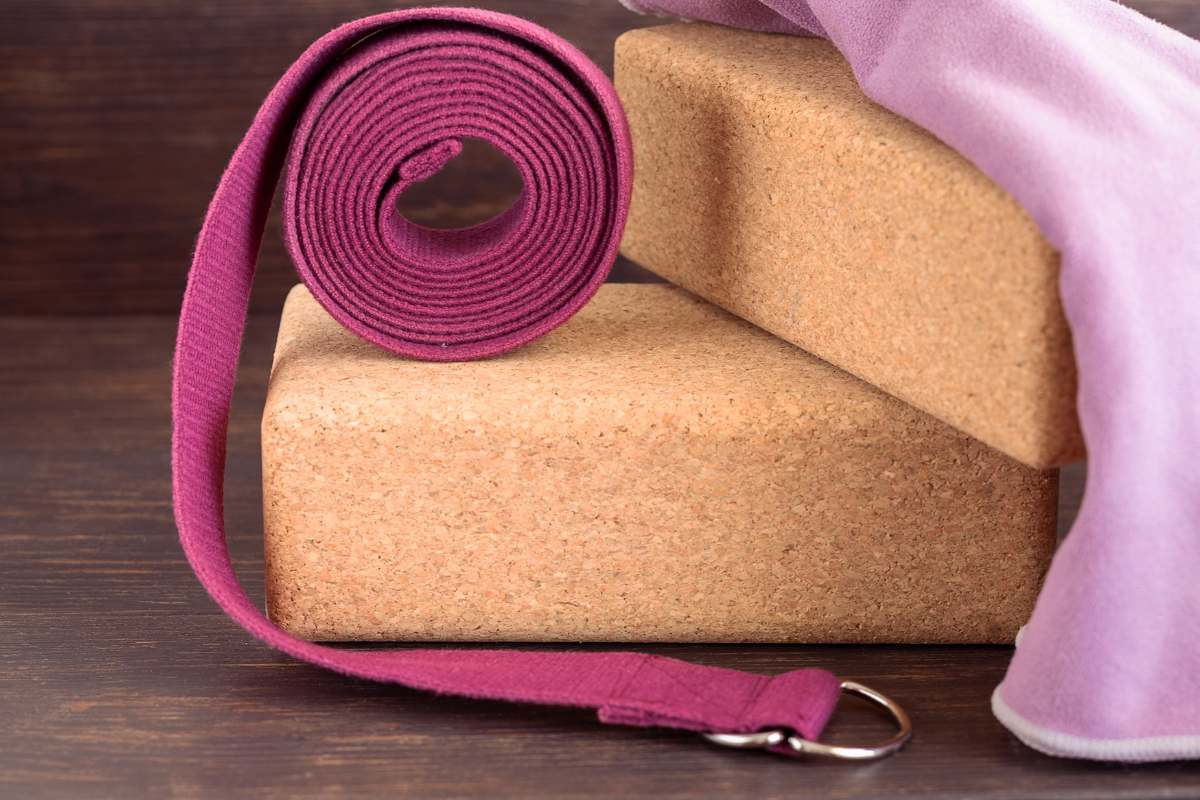
- Yoga Mat: Invest in a good quality yoga mat. It doesn’t have to be fancy, but it should provide enough cushioning and grip.
- Comfortable Clothes: Wear something stretchy and comfortable. Avoid very loose clothing as it can get in the way of some poses.
- Water Bottle: Bring water to stay hydrated, especially if you’re trying a more intense or hot yoga class.
- Props If Needed: Some styles of yoga use props like blocks or straps. Check if the studio provides them or if you need to bring your own.
Setting Realistic Goals:
- Start Small: Don’t expect to become a yogi overnight. Start with one or two classes a week.
- Be Patient: Progress in yoga can be slow and that’s okay. Celebrate the small victories.
- Stay Consistent: Like any practice, consistency is key. Make it a part of your routine.
- Track Your Progress: Keep a journal or take notes on how you feel after each class.
Listening to Your Body and Practicing Safely:
- Warm Up: Make sure your body is warmed up before diving into more challenging poses.
- Don’t Push Too Hard: Yoga shouldn’t be painful. If something feels too intense, it’s okay to back off.
- Use Modifications: If a pose isn’t accessible, use a modified version. Don’t be shy to ask the teacher for alternatives.
- Listen to Your Body: Pay attention to how your body feels during the practice. If something doesn’t feel right, ease out of the pose.
- Cool Down: Give yourself time to cool down after the practice. This is often built into the class, but if not, take a few minutes on your own to relax.
Stay Open and Enjoy the Journey
Lastly, keep an open mind. Yoga is a practice that unfolds over time. It’s not just about the physical postures but about cultivating balance, inner peace, and self-awareness.
Enjoy the process and welcome the transformations that come with it.
The Importance of Consistency and Patience
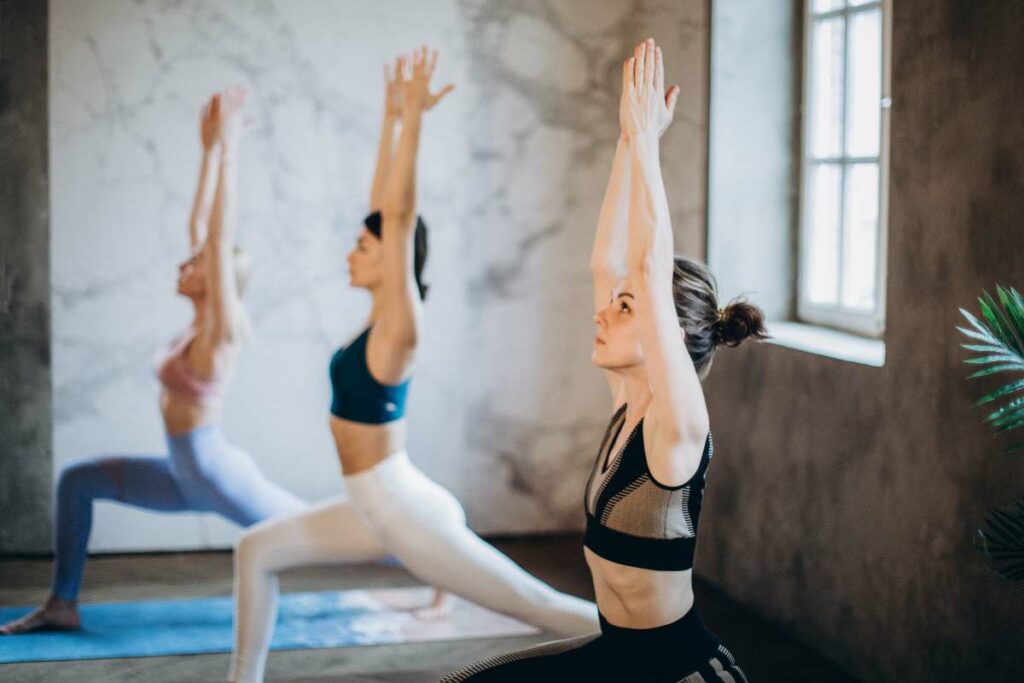
When it comes to yoga, slow and steady wins the race. Here’s why:
Building Blocks: Consistent practice lays the building blocks for strength and flexibility. You can’t build a house overnight, and the same goes for your yoga practice.
Mental Gains: Sticking to yoga helps in taming the mind. It’s like training a puppy – it takes time and patience.
Progress You Can Celebrate: As days turn into weeks and weeks into months, you’ll start to see changes. Sometimes they’re subtle, like a calmer reaction in traffic, or physical, like touching your toes.
Avoid Burnout: Going all-in too fast can lead to burnout. A measured, patient approach keeps your yoga journey enjoyable and sustainable.
Yoga is more of a lifestyle than a workout. Give yourself grace and time to grow into it.
Incorporating Yoga into a Holistic Wellness Routine
Blending yoga with other wellness practices can supercharge your health.
Consider coupling your yoga routine with a nutritious diet that fuels your body and keeps it thriving. Don’t forget to include some cardiovascular exercises, like brisk walking or cycling, to keep your heart happy.
Also, consider mental wellness practices such as journaling or socializing to nourish the mind. Think of yoga as one essential thread in the rich tapestry of your holistic well-being.
Embracing Your Unique Yoga Journey
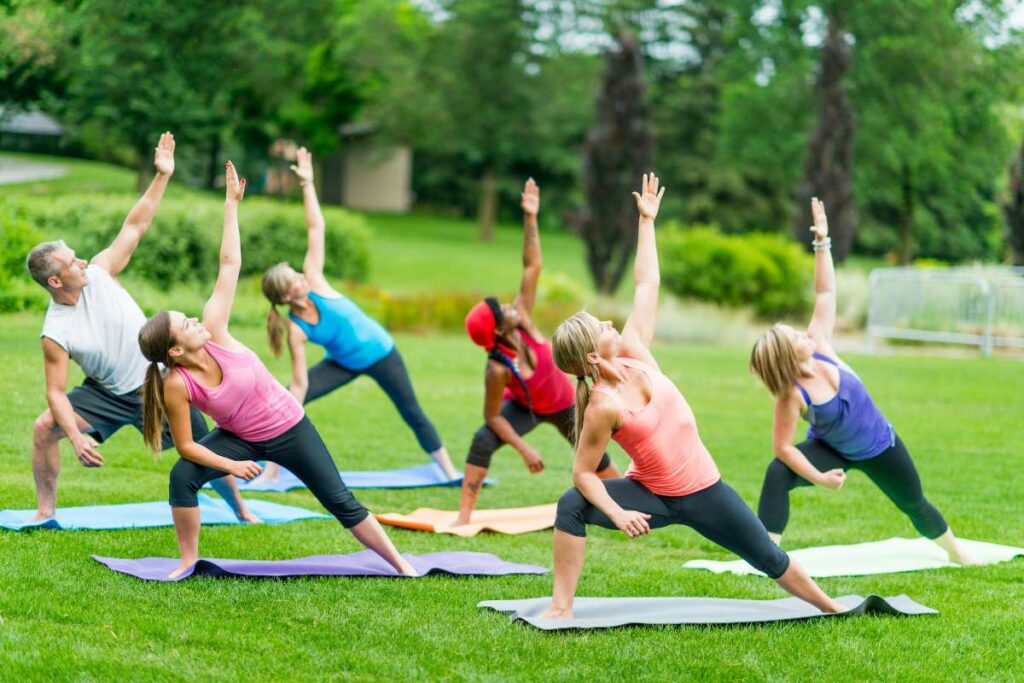
Our exploration of yoga styles comes to a close, but your personal yoga journey is just beginning. Finding the yoga style that aligns with your individual goals and needs is the key to a fulfilling and sustainable practice.
Whether your aspirations are grounded in cultivating inner tranquility, enhancing physical strength, or boosting flexibility, there is undoubtedly a yoga style tailored just for you.
As you venture onto this path, remember to embrace each moment with mindfulness and gratitude. Yoga is not just a series of postures; it’s a way of life that permeates through your actions, thoughts, and interactions.
Consider connecting with the vibrant yoga community, either locally or online. The support and shared experiences can be tremendously encouraging and enriching. Share your progress, celebrate your achievements, and don’t hesitate to seek guidance when needed.
Be kind to yourself. There might be days when the poses seem harder, or your focus wavers. That’s all part of the journey.
So, unfurl that mat, breathe deeply, and step boldly into your yoga journey. Embrace it with an open heart and an open mind, and let it be a vessel for growth, wellness, and joy. Namaste.
Ignite Your Fitness Journey with the Yoga Fat Loss Bible!
Whether you’re brand new to yoga or a seasoned pro, the Yoga Fat Loss Bible is your ultimate guide to transforming your body and mind.

Discover over 50 of the best yoga poses meticulously curated to torch fat, sculpt a toned physique, and catapult you into the most vibrant health of your life.
The Yoga Fat Loss Bible doesn’t just give you poses – it’s a comprehensive roadmap, empowering you with the knowledge and tools to integrate yoga into a holistic wellness routine. So why wait?
Grab your copy of the Yoga Fat Loss Bible today, and embark on an exhilarating journey towards a stronger, leaner, and more fulfilled you.
